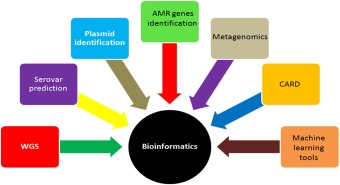
**AI-Engineered Antibiotics Exhibit Potential Against Drug-Resistant Bacteria**
The progress in creating new antibiotics has significantly fallen behind the escalating resistance of bacteria to current treatments, resulting in a critical public health emergency where once-controllable diseases have transformed into serious threats. Antibiotic-resistant bacteria are now responsible for nearly five million deaths each year.
In light of this increasing issue, James Collins, a biomedical engineer from the Massachusetts Institute of Technology, alongside his team, has achieved a significant breakthrough. They have employed advanced AI technology to craft new antibiotics that showcase potential effectiveness against two lethal drug-resistant bacteria: *Neisseria gonorrhoeae* and *Staphylococcus aureus*.
Utilizing a deep learning model, Collins’ team examined more than 45 million chemical fragments, concentrating on those with possible antibacterial attributes. The AI model used is a graph neural network capable of correlating chemical structures with their anticipated antibacterial efficacy. After carefully filtering out fragments with negative traits like toxicity, the team advanced the promising candidates as seed compounds for additional design.
The development methodology incorporated two generative AI models: one focused on fragment-based design through side-chain modifications and another on *de novo* design, creating molecules from scratch. This process culminated in screening over 36 million compounds, ultimately synthesizing 24 AI-created molecules.
Among these, the compounds NG1 and DN1 stood out as highly effective, each introducing entirely novel mechanisms of action. NG1 selectively targets pathogenic *N. gonorrhoeae*, leaving benign *Neisseria* species intact that support a healthy vaginal microbiome. Its effectiveness reaches highly drug-resistant strains in the US, which have shown resistance to all previously suggested first-line treatments.
DN1 has demonstrated exceptional bactericidal properties against *S. aureus*, with efficacy akin to leading antibiotics such as vancomycin and linezolid. Notably, DN1 achieves complete bacterial elimination within four hours, significantly quicker than the ten hours needed by vancomycin. Additionally, DN1 retains its potency against strains that are resistant to current antibiotics.
Jonathan Stokes, a computational chemist not involved in the study, praised this research as a fascinating application of generative AI in antibiotic discovery, highlighting its potential to investigate bioactive chemical space against diverse pathogens.
While encouraging, Stokes also identifies two primary challenges related to AI-assisted antibiotic development. Firstly, some AI-generated structures may prove difficult to synthesize, presenting costly and time-intensive challenges. Secondly, understanding the mechanisms behind AI-designed antibiotics remains a complex and resource-draining task. Despite these challenges, there is a sense of optimism within the scientific community that advancements will persist in this vital area.